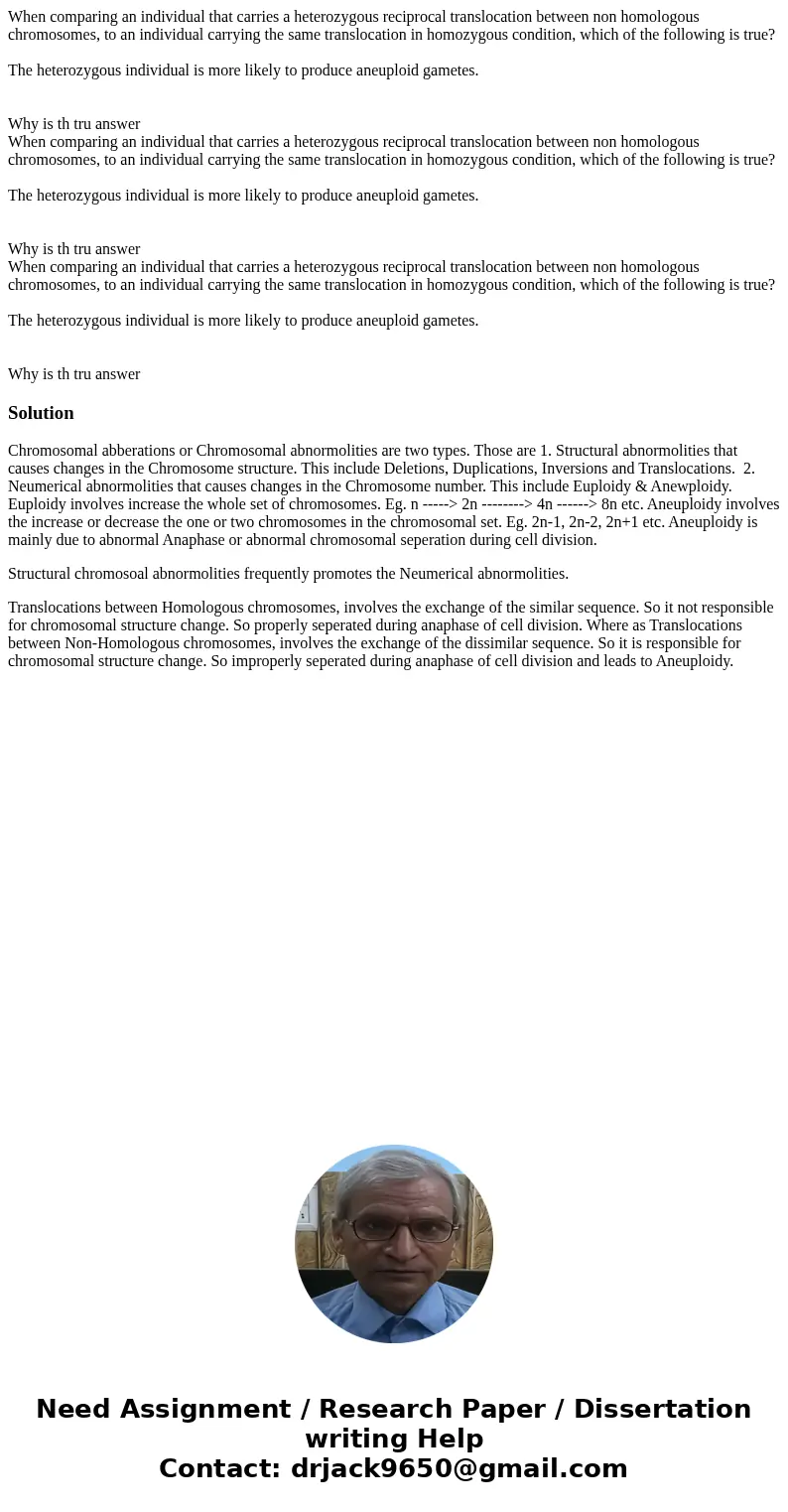When comparing an individual that carries a heterozygous rec
Solution
Chromosomal abberations or Chromosomal abnormolities are two types. Those are 1. Structural abnormolities that causes changes in the Chromosome structure. This include Deletions, Duplications, Inversions and Translocations. 2. Neumerical abnormolities that causes changes in the Chromosome number. This include Euploidy & Anewploidy. Euploidy involves increase the whole set of chromosomes. Eg. n -----> 2n --------> 4n ------> 8n etc. Aneuploidy involves the increase or decrease the one or two chromosomes in the chromosomal set. Eg. 2n-1, 2n-2, 2n+1 etc. Aneuploidy is mainly due to abnormal Anaphase or abnormal chromosomal seperation during cell division.
Structural chromosoal abnormolities frequently promotes the Neumerical abnormolities.
Translocations between Homologous chromosomes, involves the exchange of the similar sequence. So it not responsible for chromosomal structure change. So properly seperated during anaphase of cell division. Where as Translocations between Non-Homologous chromosomes, involves the exchange of the dissimilar sequence. So it is responsible for chromosomal structure change. So improperly seperated during anaphase of cell division and leads to Aneuploidy.

 Homework Sourse
Homework Sourse